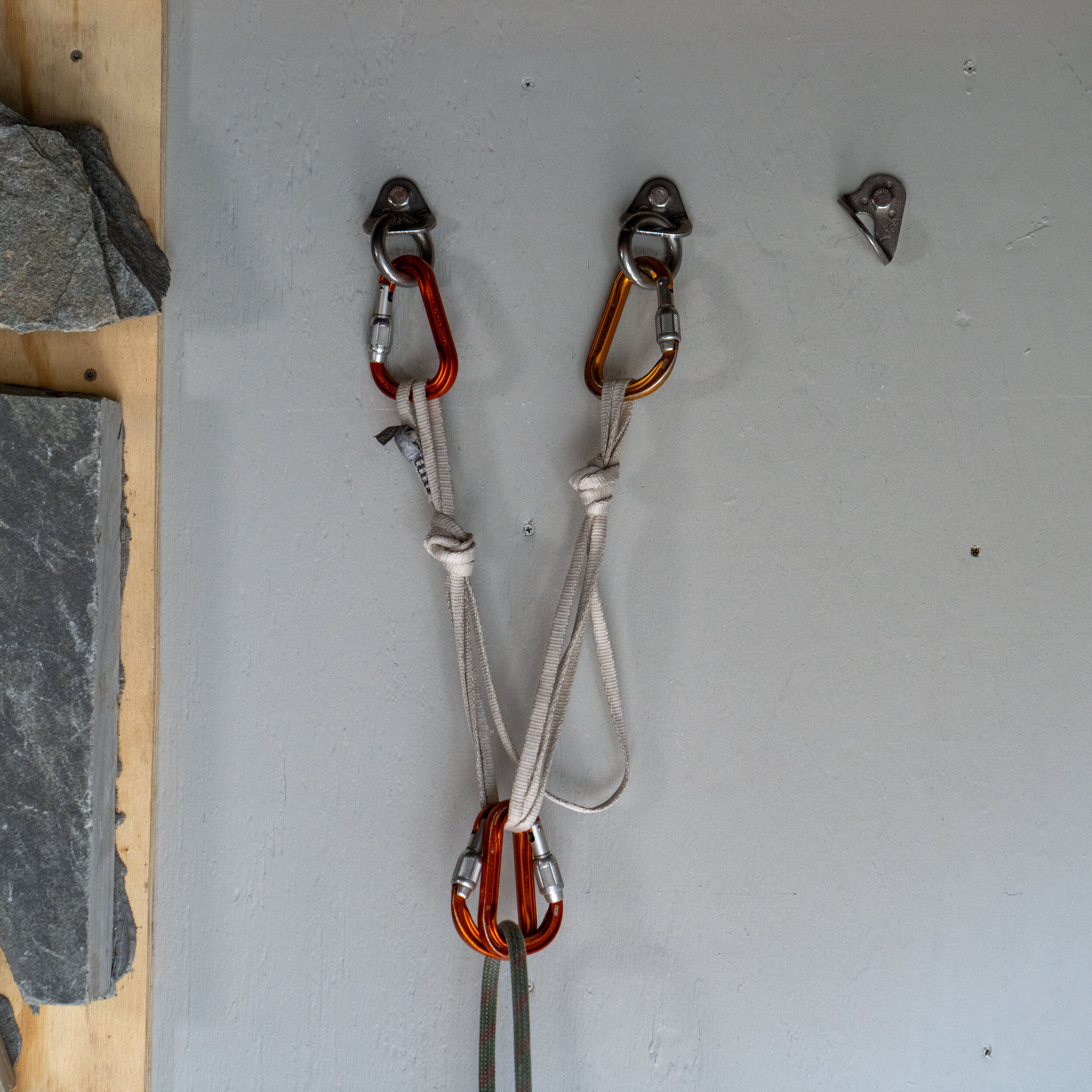The quad anchor can be a great tool when you are climbing on bolted anchors where the bolts are generally good and you might need some movement in the direction the anchor could get pulled. It also can be pre-tied making it an efficient tool.
I generally do not like using the quad on anchors that are more questionable and would prefer to use a tool that distributes more load to the components that I deem stronger. If the quad were to have a component fail, you would see extension in the anchor; albeit the force would likely be minimal especially if you are clipped in via some sort of dynamic way like a rope. Also I rarely do not know where the force in load on the anchor is going to come from, so having an anchor that can accommodate this is not necessarily an attribute I ma looking for.
When clipping into the quad there are a few ways to do it, one seems to make more sense to me than the others.
I do not use this one.
The one I do not use is clipping 3 of the 4 strands. This is no more redundant and in fact if a component were to fail you would then be hanging off a single strand of the quad. (shown in the video)
You can clip 2 strands and two strands but now the carabiners start to bind up. In theory this would allow two strands to break and you would still have one locker with two strands holding you. But I do not see this happening unless the anchor was seeing a lot of movement over a sharp edge. In this case I would likely go with a fixed master-point and some sort of edge protection like this from Rope Safe USA.
I like to clip two strands allowing the movement that makes the tool useful. I keep redundancy by having two carabiners on the two strands.
The quad also makes a great multi-pitch anchor and helps with stance comfort and station management.




